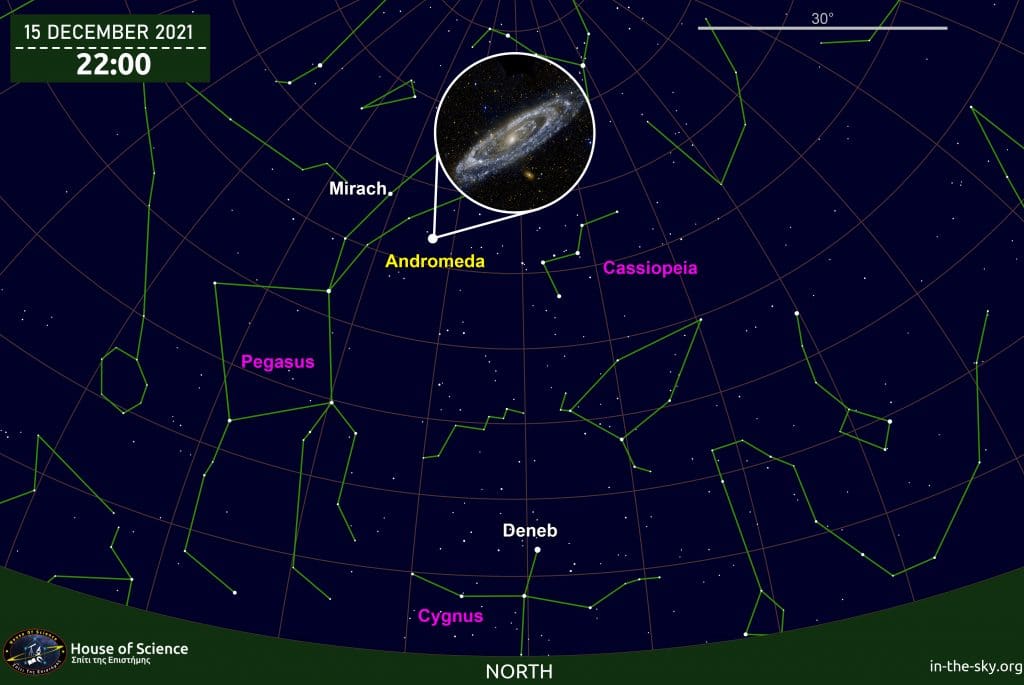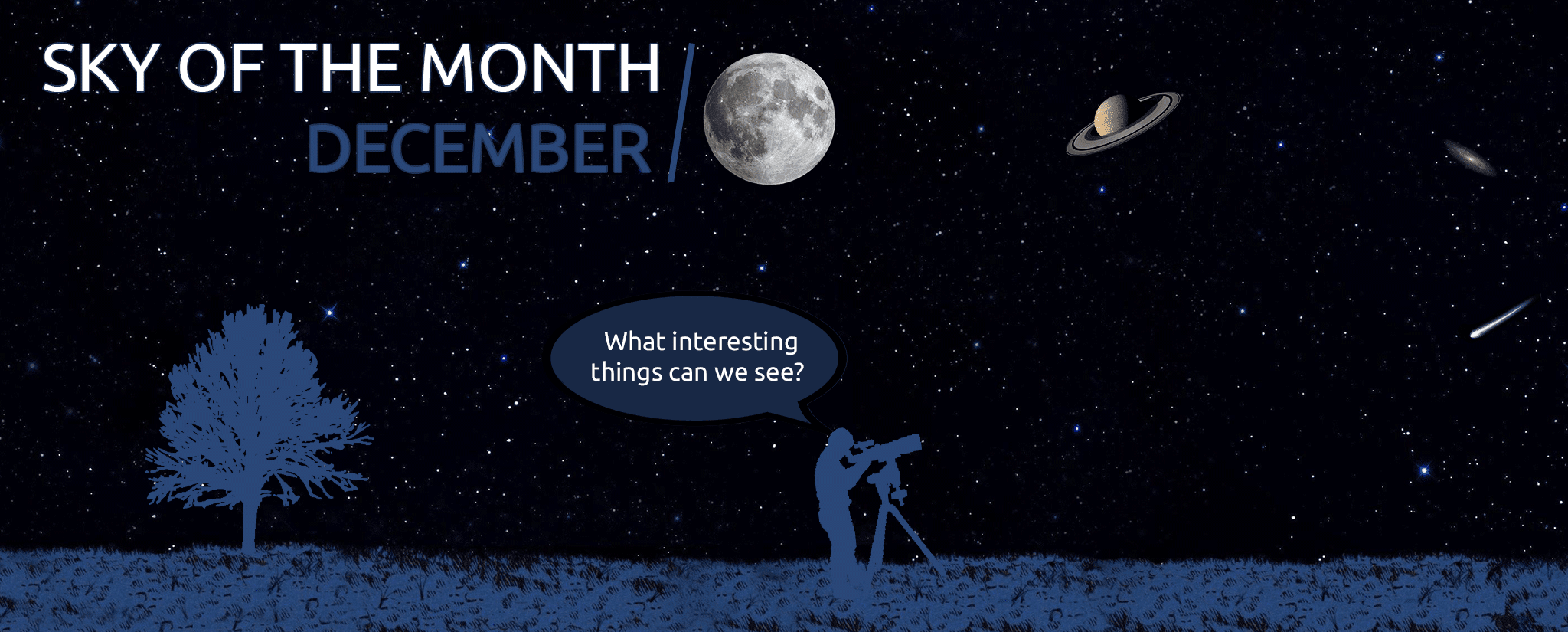
Friends of astronomy, we have almost reached December, the month of the winter solstice, where December 21 marks the astronomical beginning of winter in the northern hemisphere. So let’s see what’s worth enjoying in the night sky during the month of December.
Fun fact: Astronomically the first “official” night of winter, which is the longest of the year, is December 21
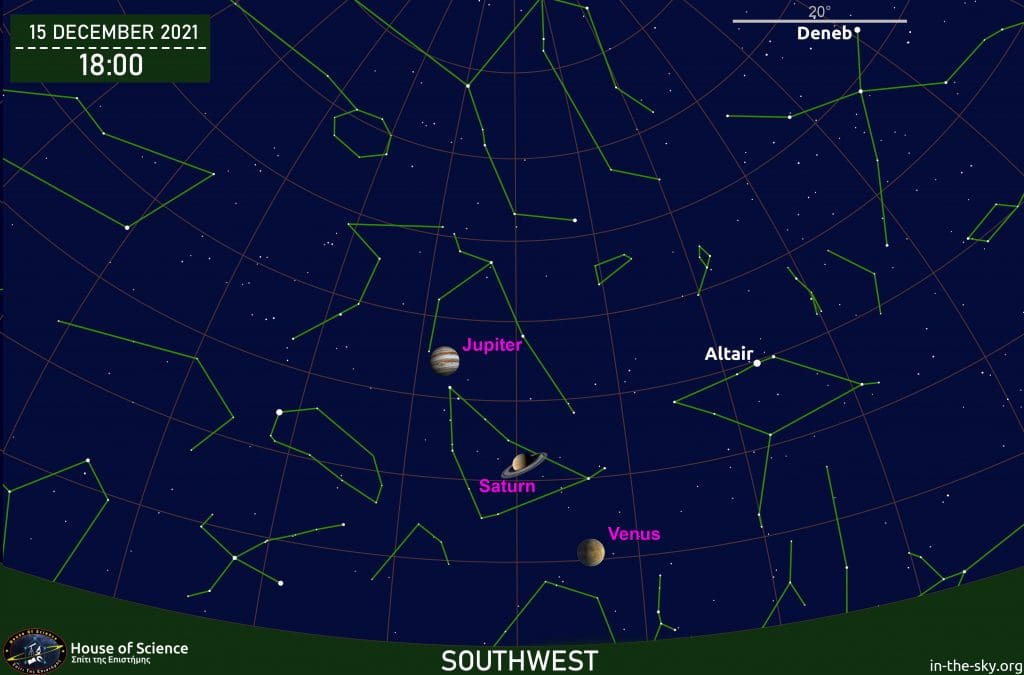
The Planets
Of the planets in our solar system, five are visible to the naked eye, Mercury, Venus, Mars, Jupiter and Saturn. Uranus and Neptune can only be seen with a telescope. For this month we will have the opportunity after dark to observe Venus, Jupiter, Jupiter and Saturn.
- Venus: It will be visible around 17:00 to the southwest just above the horizon. Except for the moon it is the brightest object in the night sky however it can only be observed for two hours.
- Jupiter: Is the largest planet in our solar system and particularly bright in the sky. You can observe him at around o’clock southwest.
- Saturn: After dark you can spot it just below Jupiter in the south. It may not shine as brightly as Venus and Jupiter but it is quite prominent. If you have a telescope at your disposal don’t miss the opportunity to observe the planet and identify the impressive rings.
Fun fact: Observing Jupiter through a telescope of any size is impressive as it reveals the motions of the four largest satellites.
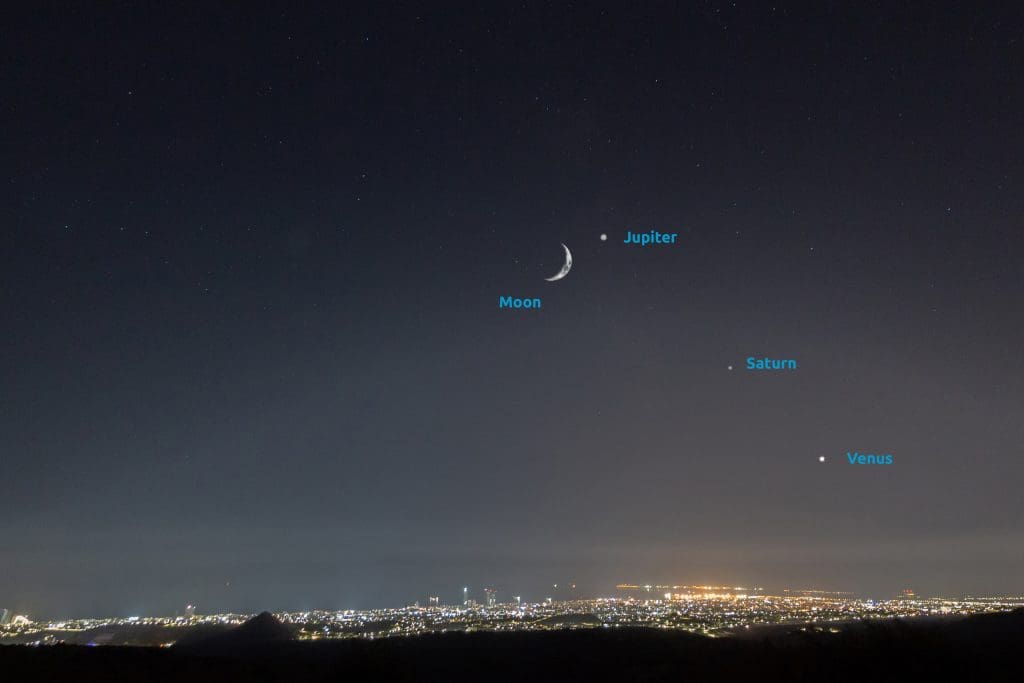
Jupiter and Moon conjuction– 09/12/2021
The three brightest objects in the sky come together to create a unique scene in the starry sky. In particular, the moon will be between Jupiter and Saturn so spotting the two planets will be very easy.
Last Full Moon of the year – 19/12/2021
At the beginning of the month the moon will be at the perigee, the closest point to the earth. On the 4th of the month we will have a New Moon, a night when the moon will not be observable and on the 19th of December we will have a Full Moon with the moon fully illuminated.
Orion and its nebula
Orion is the most prominent constellation in winter, with a variety of objects waiting to be revealed. With a small telescope or even binoculars you can enjoy Orion’s very bright nebula. By joining the stars of Orion, a human form is formed, which is why in ancient times it was named after the mythical hunter. We recognize Orion’s characteristic belt of three stars. The brightest star of Orion is Rigel and we find it in the constellation since it has the characteristic blue colour. The second brightest star of Orion is Betelgeuse with its characteristic reddish colour.
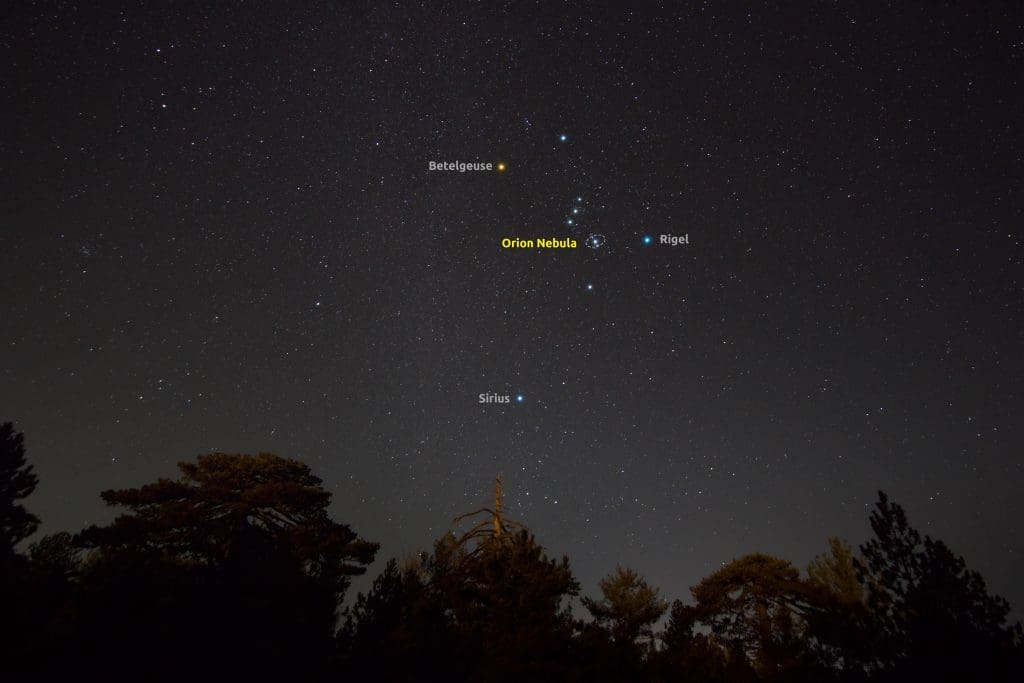
Photo taken by our team on 22/11/2021.
The Pleiades in Taurus
Characteristic in the sky are the Pleiades, a cluster of newborn stars, visible to the naked eye. You can distinguish the 7 stars that appear very close together by observing in the constellation of Taurus, which is just above Orion. The bright orange star in the same constellation is called Aldebaran, which is the iconic eye of the mythical bull.
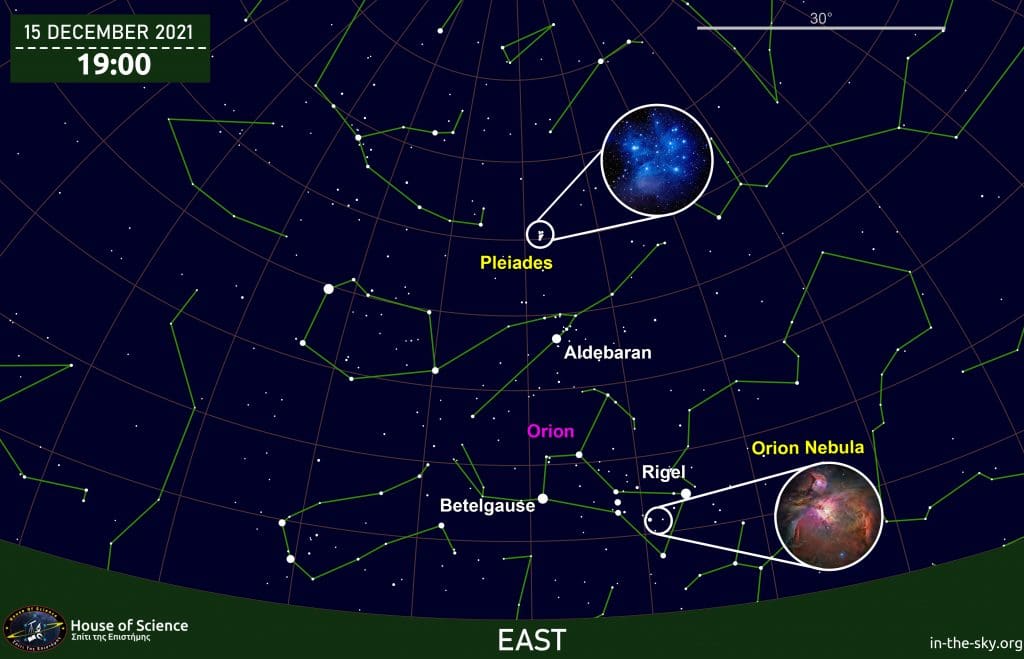
Andromeda Galaxy
The Andromeda Galaxy, which in ideal conditions can be seen with the naked eye, is the brightest galaxy in the night sky and observing it with a telescope is a spectacular experience! In fact, it is the ideal time to photograph it as it is at its zenith, the darkest point in the sky.
